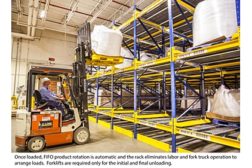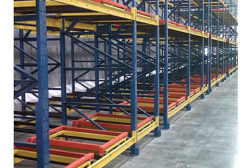Home » Keywords: » pallet flow
Items Tagged with 'pallet flow'
ARTICLES
Pallet Flow, Pushback Racks Put the Power of Gravity to Work
For maximum pallet rack use in a minimum footprint along with inventory management capability, a warehouse pallet flow storage system can be the answer.
March 14, 2013
Get our new eMagazine delivered to your inbox every month.
Stay in the know on the latest food and beverage manufacturing markets.
SUBSCRIBE TODAYCopyright ©2024. All Rights Reserved BNP Media.
Design, CMS, Hosting & Web Development :: ePublishing


